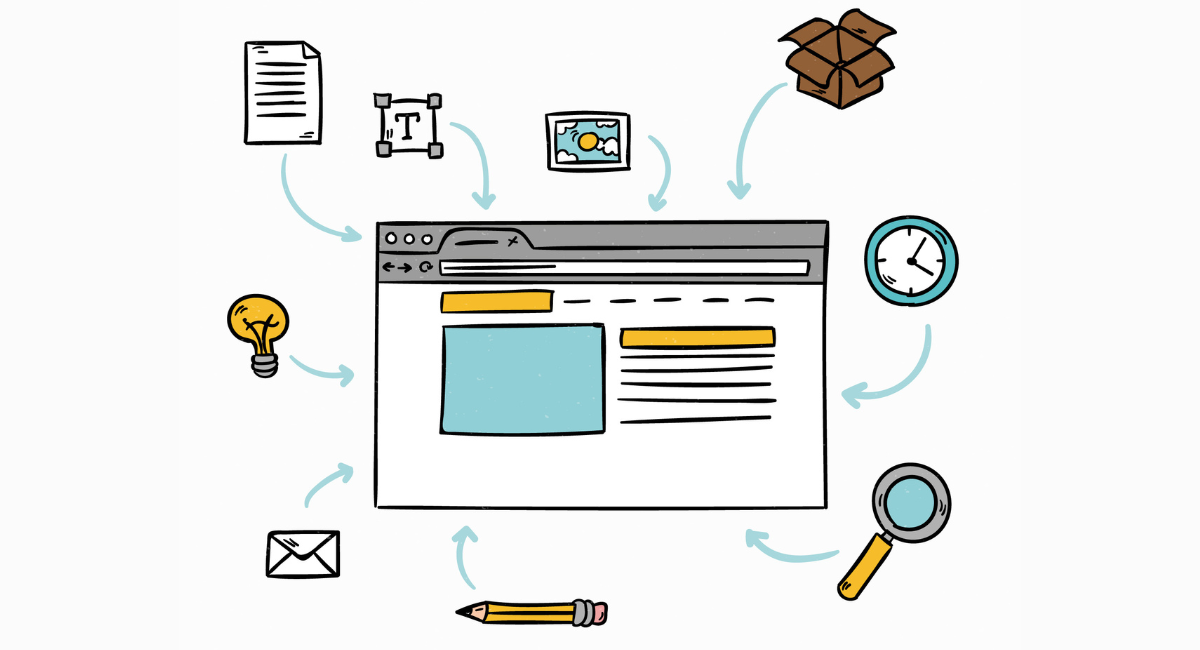Software update testing is a critical component in maintaining robust applications, ensuring they run smoothly with each new release.
For QA engineers, developers, project managers, and everyone involved in the software testing lifecycle, ensuring top-notch quality and consistency in software update testing is not just about avoiding bugs it's about building trust and delivering value to users.
This blog post aims to guide you through essential strategies and best practices to achieve impeccable software update testing.
Understanding Quality in Software Update Testing

Quality in software testing refers to the ability of a product to meet user expectations and requirements without defects. It encompasses functionality, reliability, usability, efficiency, maintainability, and portability.
Quality assurance (QA) ensures that these attributes are present in the software development lifecycle by systematically identifying and addressing potential issues before they reach end-users.
Quality assurance is not limited to bug detection alone. It involves a proactive approach to prevent defects, ensuring that the software development process adheres to predefined standards and best practices.
Effective QA plays a vital role in delivering a reliable and seamless user experience, ultimately leading to higher user satisfaction and loyalty.
Factors Affecting Quality and Consistency
Several factors can impact the quality and consistency of software testing. Understanding and addressing these factors is crucial for achieving reliable results. Common challenges include:
- Team Collaboration and Communication:
- Lack of effective communication between team members can lead to misunderstandings and misaligned goals.
- Regular meetings, clear documentation, and collaborative tools can enhance communication and ensure everyone is on the same page.
- Resource Constraints:
- Limited resources, such as time, budget, and skilled personnel, can hinder thorough testing.
- Prioritizing critical areas, automating repetitive tasks, and optimizing resource allocation can help overcome these constraints.
- Complexity of Software:
- Complex software architectures and intricate dependencies can increase the likelihood of defects.
- Implementing modular design principles and conducting thorough integration testing can mitigate the risks associated with complexity.
Strategies for Ensuring Quality and Consistency

To maintain high quality and consistency in software update testing, consider implementing the following strategies:
- Process Improvement:
- Continuous process improvement involves analyzing existing workflows, identifying bottlenecks, and implementing enhancements.
- Regularly review and refine testing processes to eliminate inefficiencies and ensure optimal performance.
- Automation:
- Test automation reduces manual effort, enhances accuracy, and accelerates testing cycles.
- Identify repetitive and time-consuming tasks that can be automated, such as regression testing, and use robust automation frameworks to streamline these processes.
- Continuous Integration and Continuous Testing:
- Continuous integration (CI) involves merging code changes frequently to detect integration issues early.
- Continuous testing (CT) ensures that code changes are automatically tested in a CI pipeline, providing rapid feedback on the impact of changes.
- Implement CI/CD (Continuous Deployment) pipelines to achieve seamless integration and testing, enabling faster and more reliable releases.
How Do You Ensure Quality in Software Testing?
Ensuring quality in software testing involves a combination of methodologies, tools, and practices aimed at delivering a defect-free product. Key approaches include:
- Test Planning:
- Develop a comprehensive test plan that outlines testing objectives, scope, resources, schedules, and deliverables.
- Define clear test cases, test data, and expected results to ensure thorough coverage of all functionalities.
- Risk-Based Testing:
- Prioritize testing efforts based on potential risks and their impact on the software.
- Focus on critical areas and functionalities that have a higher likelihood of defects or significant user impact.
- Exploratory Testing:
- In addition to scripted testing, conduct exploratory testing to uncover unexpected issues.
- Encourage testers to think creatively and explore the software beyond predefined test cases.
How Do You Ensure the Quality of Your Testing?
Maintaining the quality of your testing process is essential for reliable results. Consider the following practices:
- Test Environment Management:
- Ensure that the test environment closely mirrors the production environment.
- Regularly update and maintain test environments to reflect the latest configurations and dependencies.
- Test Data Management:
- Use realistic and representative test data to ensure accurate testing outcomes.
- Implement data masking techniques to protect sensitive information while maintaining data integrity.
- Peer Reviews and Code Quality:
- Conduct peer reviews of test cases, scripts, and code to identify potential issues early.
- Enforce coding standards and guidelines to ensure consistency and maintainability of test scripts.
How Do You Ensure That Quality Standards Are Met in the Development and Testing Processes?
Meeting quality standards requires a systematic approach that integrates quality assurance throughout the development and testing processes:
- Defining Quality Metrics:
- Establish measurable quality metrics to track and evaluate the effectiveness of testing efforts.
- Common metrics include defect density, test coverage, defect detection rate, and mean time to resolution.
- Adherence to Standards:
- Follow established industry standards and best practices, such as ISO 9001, IEEE 829, and ISTQB guidelines.
- Ensure that all team members are familiar with and adhere to these standards.
- Continuous Monitoring and Reporting:
- Implement real-time monitoring and reporting mechanisms to track the progress and quality of testing activities.
- Use dashboards and analytics to visualize key metrics and identify areas for improvement.
What Is Consistency in Software Testing?
Consistency in software testing refers to the uniformity and repeatability of testing processes and outcomes. It ensures that the same results are achieved under similar conditions, providing confidence in the reliability of the software.
Achieving consistency involves:
- Standardized Processes:
- Establish standardized test procedures, templates, and documentation across the testing lifecycle.
- Ensure that all team members follow the same guidelines and methodologies.
- Version Control:
- Use version control systems to manage test scripts, data, and configurations.
- Track changes and maintain a history of modifications to ensure reproducibility.
- Regression Testing:
- Conduct regular regression testing to verify that new changes do not introduce defects or impact existing functionalities.
- Automate regression tests to ensure consistent execution and coverage.
Case Studies and Real-World Examples
Real-world examples highlight the practical application of strategies to enhance software testing quality and consistency:
- Case Study 1: XYZ Corporation:
- XYZ Corporation implemented continuous integration and automated testing to reduce the time required for regression testing by 50%.
- This resulted in faster releases and improved customer satisfaction.
- Case Study 2: ABC Technologies:
- ABC Technologies adopted risk-based testing and exploratory testing to identify critical defects early in the development cycle.
- This approach significantly reduced the number of post-release defects and improved overall product quality.
- Case Study 3: DEF Solutions:
- DEF Solutions focused on test environment management and data integrity to ensure accurate and reliable testing outcomes.
- This approach minimized discrepancies between testing and production environments, leading to more consistent results.
Future Trends and Technologies
Emerging trends and technologies are shaping the future of software testing, offering new opportunities to enhance quality and consistency:
- AI in Testing:
- AI-powered testing tools can analyze vast amounts of data, identify patterns, and predict potential defects.
- AI-driven test automation can optimize test case generation, execution, and maintenance.
- Shift-Left Testing:
- Shift-left testing involves integrating testing activities earlier in the development process.
- This approach enables early defect detection and reduces the cost and effort required for bug fixing.
- DevOps Practices:
- DevOps practices promote collaboration and automation across development and operations teams.
- Continuous integration, continuous testing, and continuous deployment are core principles of DevOps that enhance software quality and consistency.
Book a Demo and experience ContextQA testing tool in action with a complimentary, no-obligation session tailored to your business needs.
Conclusion
Ensuring quality and consistency in software update testing is paramount for delivering reliable and user-friendly applications.
By understanding the key factors affecting quality, implementing effective strategies, and staying abreast of emerging trends, organizations can achieve remarkable results in their testing efforts.
For those looking to take their software testing to the next level, consider implementing the practices discussed in this blog.
Continuous improvement, automation, and a proactive approach to quality assurance will not only enhance your testing outcomes but also contribute to the overall success of your software projects.
In the ever-evolving landscape of software development, quality and consistency are the cornerstones of success.
By following these best practices and leveraging the latest technologies, you can ensure that your software updates are reliable, efficient, and meet the highest standards.
For more insights and personalized guidance, consider reaching out to industry experts and exploring additional resources. Together, we can build a future where software quality is never compromised.
Also Read - How to Learn Software Testing and Automation?
We make it easy to get started with the ContextQA tool: Start Free Trial.
